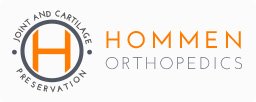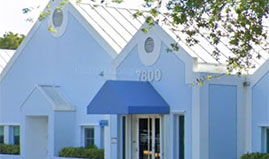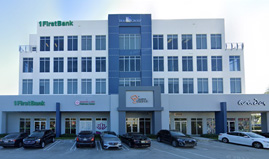Cell-based Therapy
What is a Cell-based ?
Cell-baseds have the unique ability to develop into different specialized cells in the body. They have the ability to differentiate into cell types like skin, fibrous scar tissue, blood vessels, nerve, bone, cartilage, etc. They are broken down into two major types of cells: Embryonic (ESCs) and Adult.
What are the Different Types of Cell-baseds?
Embryonic Cell-baseds (ESCs)
Embryonic Cell-baseds (ESCs) are Cell-baseds derived from early human embryos that are in the blastocyst phase of development. ESCs are pluripotent, which means they can develop into almost any of the various cell types of the body. As the young embryo develops and forms into a baby, the Cell-baseds that are located in specific areas of the growing tissues start to differentiate into cell types like bone, nerves, blood cells, muscle etc.
Adult Cell-baseds
Adult stems cells are called somatic Cell-baseds. As we age, adult Cell-baseds help to renew and restore old and worn out tissue and cells. Like embryonic Cell-baseds, adult Cell-baseds have the ability to turn into more than one cell type, however this differentiation is restricted to a limited number of cells types. Adult Cell-baseds are found in tissues such as the brain, bone marrow, blood, fat, blood vessels, skeletal muscles, skin and liver.
What is Cell-based Therapy?
Cell-based therapy is a regenerative type of medicine using the body’s natural healing ability to heal various medical problems. There are many applications of Cell-based therapy to treat diseased or damaged tissues in the fields of orthopedics, cardiovascular, neuromuscular, cancer, and autoimmune disorders. As we age, our body may not be able to generate enough Cell-baseds to successfully heal and regenerate damaged tissues. By introducing a highly concentrated amount of Cell-baseds into damaged tissue, there is an increased potential for the body’s natural repair system to regenerate healthy tissue. The goal of Cell-based therapy is therefore to amplify the body’s natural repair system by increasing the numbers of Cell-baseds at injured or diseased sites.
What is the Potency of Cell-based?
Cell-baseds can be categorized by their potential to differentiate into other forms of cells. Embryonic Cell-baseds are the most potent since they must become every type of cell in the body, whereas adult’s cells are limited in their ability.
- Totipotent cells - can differentiate into all possible cell types. An example of this is the zygote, which is formed at egg fertilization and are the first few cells that result from the division of the zygote.
- Pluripotent cells – can differentiate into almost all cell types. Examples of this are embryonic Cell-baseds and cells that are derived from the mesoderm, endoderm, and ectoderm germ layers that are formed in the beginning stages of embryonic Cell-based differentiation.
- Multipotent cells can differentiate into a closely related family of cells. Examples include hematopoietic (adult) Cell-baseds that can differentiate into red and white blood cells or platelets.
- Oligopotent cells can differentiate only into a few cells. Examples include (adult) lymphoid or myeloid Cell-baseds.
- Unipotent cells can only produce cells of their own type. This self-renewal property allows them to be labeled a Cell-based. Examples include (adult) muscle Cell-baseds.
Mesenchymal Cell-based Therapy in Orthopedics?
You may be familiar with the term “mesenchymal Cell-based” or MSC. These are cells that harvested from stroma, the connective tissue that surrounds other tissues and organs. Therefore, these are also called “stromal cells” by many scientists. First discovered in bone marrow, these cells are capable of making bone, cartilage and fat cells. Since then, these cells have been grown from other tissues, such as fat and cord blood. It is thought that certain MSCs have Cell-based, and even immunomodulatory, properties.
Scientists are actively performing a tremendous amount of research to determine the potential use of MSCs in orthopedic applications. Cell-baseds are currently being used in the treatment of various soft tissues such as muscle, tendon, ligament, articular cartilage, and fibrocartilage (i.e. labrum of the shoulder and hip and the meniscus of the knee). There is also significant interest in using MSCs to treat degenerative arthritic conditions of the shoulder, hip, and knee.
To harvest these cells from the body, a needle is inserted into the iliac crest of the pelvis bone to extract the cells. The harvested sample is then centrifuged to isolate and concentrate the Cell-baseds. These cells can then be injected into the area of concern, such as muscle, tendon, ligament, or the joint.
Liquid Amnion and Orthopedics
The amnion is the sac that encloses a developing fetus. Inside the amnion, amniotic fluid is the protective media which surrounds the fetus. The amnion and amniotic fluid are rich in Cell-baseds or precursor cells that can divide and differentiate into cells of any tissue. Both amnion and amniotic fluid can be obtained from a donor during gestation or at birth. They can be cryopreserved for later use. In addition to the Cell-baseds, there are concentrations of growth factors, proteins and other extracellular components essential for healing, reducing inflammation and building a scaffold for new tissue growth.
Therefore, there are many orthopedic applications of cryopreserved amniotic fluid to treat injured or degenerative muscle, tendon, ligament, articular cartilage, and fibrocartilage (i.e. labrum of the shoulder and hip and the meniscus of the knee).
Who is a Candidate for a Cell-baseds Procedure?
If you are suffering from joint pain and wish to improve your quality of life with a non-surgical option, you may be a good candidate for Cell-based therapy.
How Do I Prepare for a Cell-based Procedure?
- Stop taking any non-steroidal anti-inflammatory drugs (NSAIDs) at least two weeks before your procedure. This allows the cells to be fully functional.
- Preparing for a Cell-based procedure is relatively easy and your doctor will give you specific instructions depending on your condition.
Cell-based procedure
Mesenchymal Cell-based (MSCs) Injection
Your doctor will extract Cell-baseds from your own bone marrow from your iliac crest in the hip area. The marrow is collected in special syringe. The bone marrow is then centrifuged in the laboratory to create a concentrated Cell-based sample. Your doctor then cleans and numbs the area and, depending on the site of the injection, may use an x-ray or ultrasound machine to inject the cells into the diseased area. The entire procedure takes around 1 hour and is performed in an outpatient setting.
Embryonic / Amniotic Cell-based Injection
Your doctor will have the cryopreserved injection available for your injection. The doctor will first clean and numb the area and, depending on the site of the injection, may use an x-ray or ultrasound machine to inject the cells into the diseased area. The entire procedure usually takes less than 1 hour and is performed in an outpatient setting.
Post-procedure Care
- You will most likely be able to return to work the next day following your procedure.
- You will need to take it easy and avoid any load bearing activities for at least two weeks following your procedure.
- You will need to refrain from taking non-steroidal, anti-inflammatory medications (NSAIDS) for a while as this can affect the healing process of your body.
Advantages
- Relatively simple procedure
- Avoid complications associated with surgical procedures.
- MSCs (cells harvested from the body) are derived from your own body and therapy reduces the changes of immune reaction.
Disadvantages
Cell-based therapy is a relatively new procedure and there is a general lack of data about the long-term effects of Cell-based therapy. Your physician will not be able to promise re-growth of cartilage cells, reverse the degenerative process of arthritis, or heal injured muscles, tendons or ligaments.
Risks & Complications
Although Cell-based therapy is generally a safe procedure with minimal complications, as with any other medical procedure, there is the potential for complications. Some of the risk factors include bacteria, viruses, and other pathogens that can be introduced at the time of the harvesting of the cells, the preparation process, or the injection of the cells into the damaged tissue. Rarely, an autoimmune reaction may occur.
Insurance Coverage for Cell-based Therapy
If you are considering treatment with Cell-based Therapy, be sure to check your eligibility with your health insurance carrier. Few insurance plans, including workers' compensation plans, provide even partial reimbursement. Cell-based Therapy remains a relatively experimental procedure at this time.
Does Dr. Hommen Perform Cell-based Therapy?
Yes, Dr. Hommen performs Cell-based Therapy.













